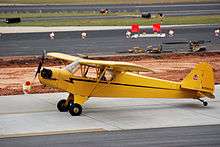Chrome yellow

Chrome yellow is lead(II) chromate (PbCrO4). It occurs naturally as the mineral crocoite but the mineral itself was never used as a pigment for paint. After the French chemist Louis Vauquelin discovered the new element chromium in 1797 lead chromate was synthesized in the laboratory and its use as a pigment began in the second decade of the nineteenth century.[1]
Chrome yellow had been commonly produced by mixing solutions of lead nitrate and potassium chromate and filtering off the lead chromate precipitate.
Because the pigment tends to react with hydrogen sulfide and darken on exposure to air over time, forming lead sulfide, [2] and it contains lead, a toxic, heavy metal, and the toxic and carcinogenic chromate as well it was originally replaced by another pigment, cadmium yellow (mixed with enough cadmium orange to produce a color equivalent to chrome yellow).[3]Darkening may occur as well by reduction with sulfur dioxide. Good quality pigments have been coated to inhibit contact with gases that can change their colour [4]

The first recorded use of chrome yellow as a color name in English was in 1818.[6]
The Piper J-3 Cub aircraft had chrome yellow as its standard overall color, usually called "Cub Yellow" or "Lock Haven Yellow" in aviation circles, from the Piper factory that existed in Lock Haven, Pennsylvania, where it was made in the 1930s and during World War II.
See also
References
- ↑ Kühn, H. and Curran, M., Chrome Yellow and Other Chromate Pigments, in Artists’ Pigments. A Handbook of Their History and Characteristics, Vol. 1, L. Feller, Ed., Cambridge University Press, London 1986, p. 187 – 204, pp 188-190
- ↑ Pichon, A. Pigment degradation: Chrome yellow’s darker side. Nature Chemistry, 5(11), 2013, 897–897. doi:10.1038/nchem.1789
- ↑ Gettens, Rutherford John; Stout, George Leslie (1966). Painting Materials: A Short Encyclopaedia. Courier Dover Publications. p. 106. ISBN 978-0-486-21597-6.
- ↑ Entry on Bleichromat-Pigmente. at: Römpp Online. Georg Thieme Verlag, retrieved 22. Juli 2018.
- ↑ Worobec, Mary Devine; Hogue, Cheryl (1992). Toxic Substances Controls Guide: Federal Regulation of Chemicals in the Environment. BNA Books. p. 13. ISBN 978-0-87179-752-0.
- ↑ Maerz and Paul A Dictionary of Color New York:1930 McGraw-Hill Page 192; Color Sample of Chrome Yellow: Page 43 Plate 10 Color Sample L4
Further reading
- Kühn, H. and Curran, M., Chrome Yellow and Other Chromate Pigments, in Artists’ Pigments. A Handbook of Their History and Characteristics, Vol. 1, L. Feller, Ed., Cambridge University Press, London 1986
External links
- Chrome yellow, Colourlex
- Pichon, A. Pigment degradation: Chrome yellow’s darker side. Nature Chemistry, 5(11), 2013, 897–897. doi:10.1038/nchem.1789